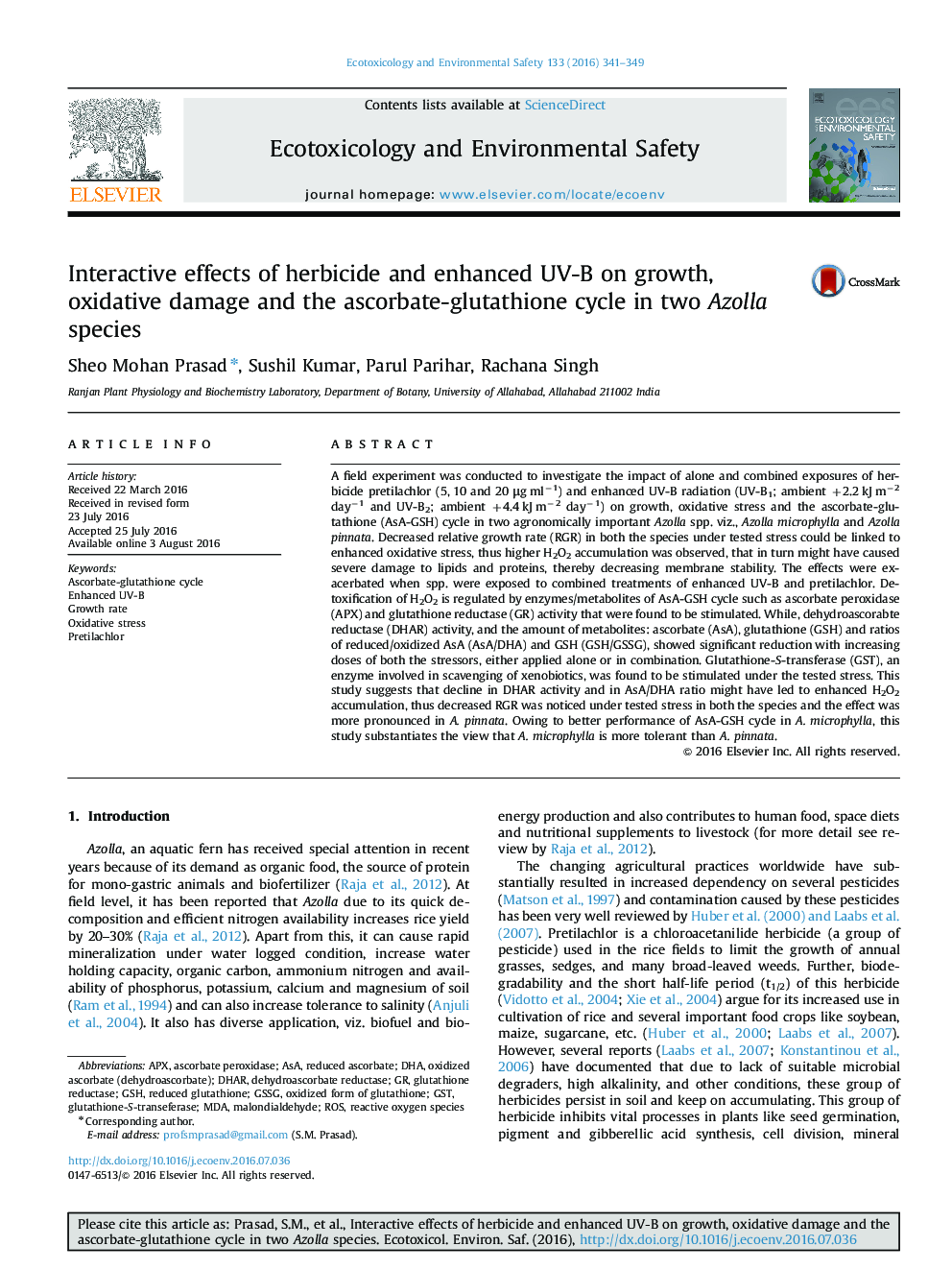| کد مقاله | کد نشریه | سال انتشار | مقاله انگلیسی | نسخه تمام متن |
|---|---|---|---|---|
| 4419019 | 1618930 | 2016 | 9 صفحه PDF | دانلود رایگان |

• UV-B and pretilachlor affected the growth of Azolla spp.
• Both stressors affected the ascorbate-glutathione cycle enzymes.
• Azolla pinnata was more sensitive than Azolla microphylla.
A field experiment was conducted to investigate the impact of alone and combined exposures of herbicide pretilachlor (5, 10 and 20 μg ml−1) and enhanced UV-B radiation (UV-B1; ambient +2.2 kJ m−2 day−1 and UV-B2; ambient +4.4 kJ m−2 day−1) on growth, oxidative stress and the ascorbate-glutathione (AsA-GSH) cycle in two agronomically important Azolla spp. viz., Azolla microphylla and Azolla pinnata. Decreased relative growth rate (RGR) in both the species under tested stress could be linked to enhanced oxidative stress, thus higher H2O2 accumulation was observed, that in turn might have caused severe damage to lipids and proteins, thereby decreasing membrane stability. The effects were exacerbated when spp. were exposed to combined treatments of enhanced UV-B and pretilachlor. Detoxification of H2O2 is regulated by enzymes/metabolites of AsA-GSH cycle such as ascorbate peroxidase (APX) and glutathione reductase (GR) activity that were found to be stimulated. While, dehydroascorabte reductase (DHAR) activity, and the amount of metabolites: ascorbate (AsA), glutathione (GSH) and ratios of reduced/oxidized AsA (AsA/DHA) and GSH (GSH/GSSG), showed significant reduction with increasing doses of both the stressors, either applied alone or in combination. Glutathione-S-transferase (GST), an enzyme involved in scavenging of xenobiotics, was found to be stimulated under the tested stress. This study suggests that decline in DHAR activity and in AsA/DHA ratio might have led to enhanced H2O2 accumulation, thus decreased RGR was noticed under tested stress in both the species and the effect was more pronounced in A. pinnata. Owing to better performance of AsA-GSH cycle in A. microphylla, this study substantiates the view that A. microphylla is more tolerant than A. pinnata.
Figure optionsDownload as PowerPoint slide
Journal: Ecotoxicology and Environmental Safety - Volume 133, November 2016, Pages 341–349